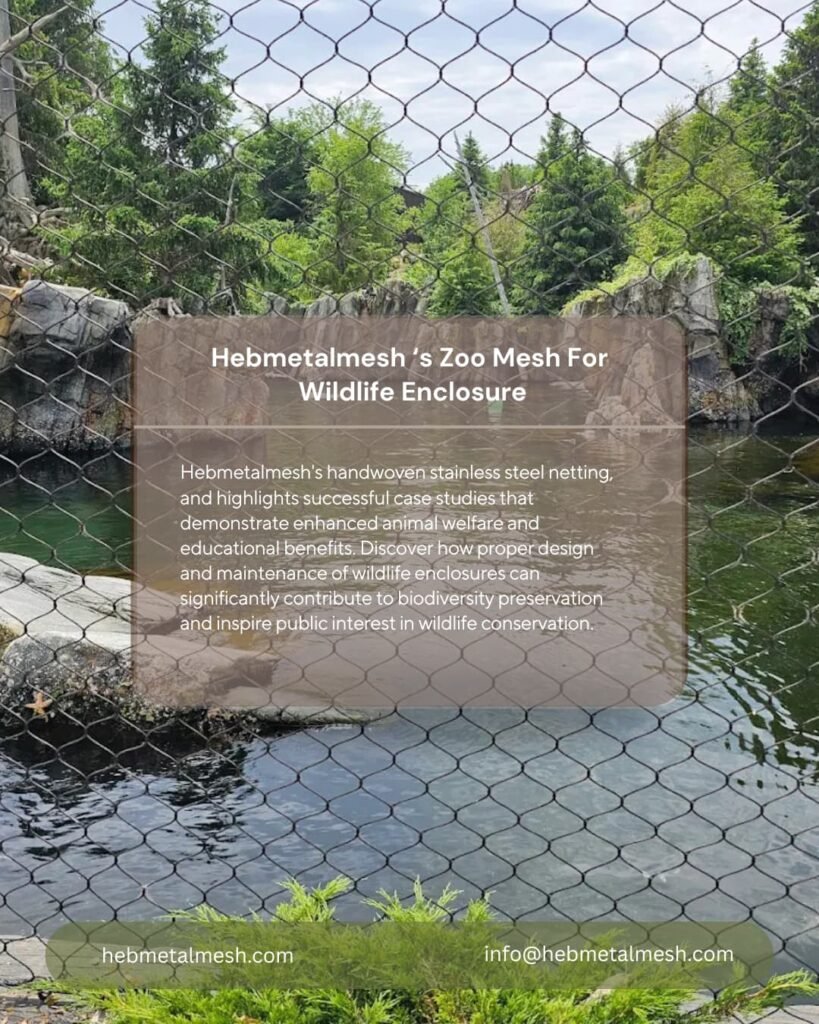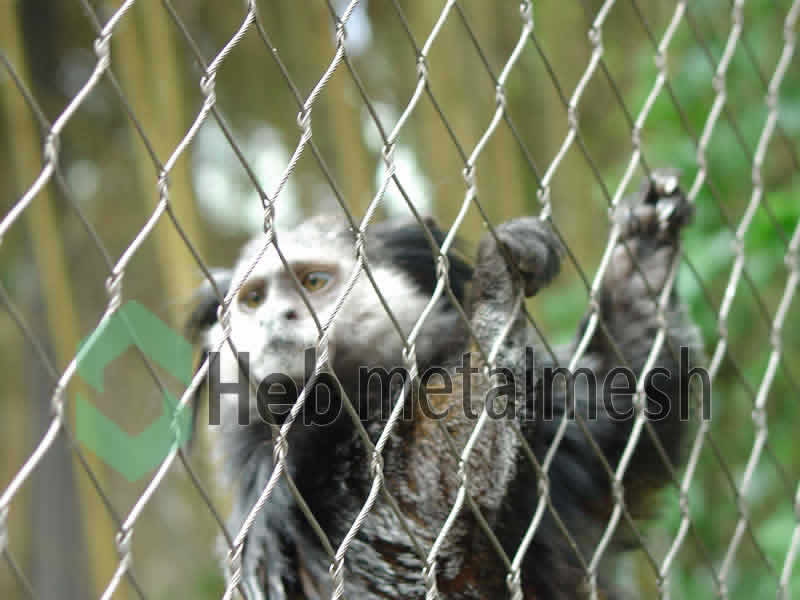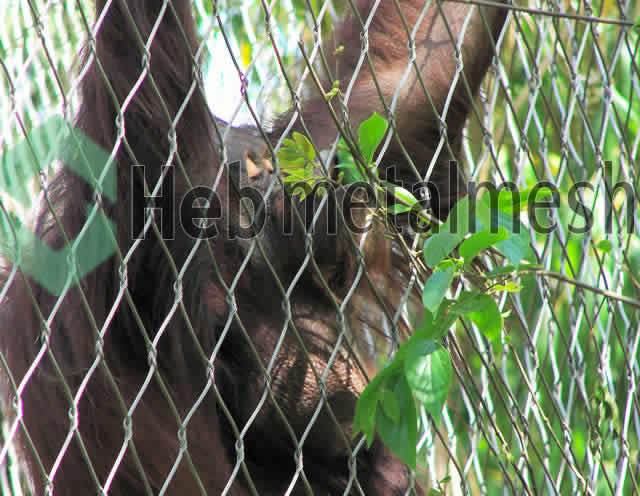Understanding Wildlife Enclosures
Wildlife enclosures are carefully designed habitats that provide a safe and secure environment for a variety of animal species. These enclosures serve multiple purposes, primarily focusing on conservation, education, and the overall well-being of the animals housed within them. By replicating natural habitats, wildlife enclosures allow for the protection of animals from threats such as habitat loss, poaching, and human-induced dangers, while also facilitating research and public awareness.
One of the key aspects of wildlife enclosures is their vital role in conservation efforts. Many species are endangered or at risk of extinction due to factors like habitat destruction and climate change. Enclosures create secure spaces where these vulnerable populations can be monitored, bred, and cared for, with the ultimate goal of reintroducing them into their natural environments when conditions are favorable. By providing both physical protection and a controlled setting, these facilities can improve the genetic diversity of at-risk species and contribute to the overall health of ecosystems.
Wildlife enclosures can take various forms depending on the species they cater to. From aviaries designed for birds to vast reserves for large mammals, each enclosure must be tailored to meet the specific needs of its inhabitants. For instance, aquatic species benefit from enclosures that mimic their natural aquatic environments, while terrestrial animals require space to roam and explore. The integration of natural elements such as vegetation, water sources, and appropriate shelter is crucial in ensuring that wildlife enclosures promote the physical and psychological well-being of the animals.
Moreover, these environments serve as educational platforms, allowing visitors to learn about diverse species and the ecological challenges they face. By fostering a connection between humans and wildlife, enclosures can significantly contribute to the ongoing conservation movement, inspiring greater public interest and support for wildlife preservation.
The Importance of Choosing the Right Materials
When constructing a wildlife enclosure, the selection of materials plays a pivotal role in ensuring the welfare of the animals within. The well-being of wildlife in captivity hinges on factors such as safety, durability, and comfort, which are largely dictated by the suitability of the materials used in the enclosure’s construction.
First and foremost, safety must be prioritized. Animals must be contained in a manner that prevents escapes while also protecting them from potential threats, including human interaction or environmental hazards. Materials like Hebmetalmesh’s handwoven stainless steel netting provide a robust solution, offering excellent strength and corrosion resistance. This ensures that the enclosure can withstand various weather conditions and resist wear over time, significantly enhancing the lifespan of the wildlife enclosure.
Durability is another critical consideration. Wildlife enclosures face physical stress from both the animals inside and external forces such as weather or natural disasters. The right materials should be able to endure such challenges without compromising the enclosure’s integrity. For example, high-quality stainless steel not only resists rust but also ensures that the structural framework remains stable, thus minimizing maintenance costs and ensuring long-term reliability.
Comfort is equally vital for animals in captivity. The materials used should allow for adequate ventilation, natural light, and temperature regulation. The design and choice of materials can significantly affect how wildlife interacts with their enclosure—materials that ensure a more natural experience can lead to lower stress levels among the animals. By creating a habitat that mimics their natural environment while still providing necessary safety, the animals can thrive in captivity.
In conclusion, selecting the right materials for a wildlife enclosure is not merely a matter of aesthetics but a fundamental aspect that influences the safety, durability, and overall comfort of the animals. By prioritizing quality materials such as stainless steel netting, one can significantly enhance the living conditions of wildlife in captivity.
Why Stainless Steel Netting? An Overview
When it comes to constructing a wildlife enclosure, the choice of materials plays a crucial role in ensuring both the safety of the animals and the longevity of the infrastructure. Among various options available, stainless steel netting stands out due to its numerous advantages. One of the most notable features of stainless steel is its exceptional durability. Unlike traditional materials prone to wear and tear, stainless steel provides robust resistance against physical impacts, ensuring the integrity of the enclosure over time.
Another significant advantage is the corrosion and rust resistance that stainless steel netting offers. In outdoor environments where enclosures are often subjected to various weather conditions, rust can severely compromise the structural integrity of the materials used. Stainless steel is engineered to withstand these elements, ensuring that the surrounding wildlife remains protected, while also minimizing maintenance efforts and costs associated with replacement.
Moreover, the safety of animals within the wildlife enclosure is paramount. Stainless steel netting is not only strong but also designed to prevent escape and protect the animals from external threats. Its tightly woven design eliminates gaps that could endanger the wildlife contained within. This aspect is especially critical for smaller species, which are often at risk of slipping through larger openings found in other types of enclosures.
Furthermore, the aesthetic appeal of stainless steel adds to the overall design of the wildlife enclosure. Its sleek appearance complements the natural environment, making it an appealing choice for those concerned about visual impact. In conclusion, the combination of durability, resistance to corrosion, and enhanced safety features makes stainless steel netting an outstanding option for constructing wildlife enclosures that not only protect the animals but also ensure a sustainable solution for years to come.
Features of Hebmetalmesh’s Handwoven Stainless Steel Netting
Hebmetalmesh’s handwoven stainless steel netting is renowned for its exceptional strength and durability, making it an ideal choice for wildlife enclosures. This high-quality material is crafted from stainless steel wires, which inherently resist rust and corrosion, ensuring longevity and reliability in various environmental conditions. The robust nature of this netting allows for secure confinement of diverse wildlife species, promoting both safety and well-being within the enclosure.
In addition to its strength, the flexibility of Hebmetalmesh’s netting is a significant advantage. Unlike rigid fencing options, this handwoven netting can be easily shaped and adapted to different enclosure designs. Whether constructing a small aviary or a vast habitat for larger animals, the inherent flexibility allows for innovative architectural solutions that blend seamlessly with the natural environment. This adaptability facilitates the creation of unique, customized wildlife enclosures that cater to the specific needs of the animals being housed.
The weave patterns of Hebmetalmesh’s netting further enhance its effectiveness and aesthetic appeal. The intricate design not only contributes to the overall strength of the enclosure but also provides improved visibility for both the wildlife and visitors. The handwoven technique allows for varying mesh sizes, offering options that can deter smaller animals while ensuring larger species are safely contained. This combination of strength, flexibility, and aesthetic design ensures that wildlife enclosures built with Hebmetalmesh’s products not only serve their primary purpose but also create a visually pleasing environment.
Overall, the features of Hebmetalmesh’s handwoven stainless steel netting significantly support the construction of secure, functional, and attractive wildlife enclosures, making it a premier choice for wildlife enthusiasts and professionals alike.
Environmental Considerations in Wildlife Enclosure Design
When designing a wildlife enclosure, environmental considerations play a crucial role in ensuring the well-being of the inhabitants. One primary factor to focus on is habitat mimicry, which involves creating an environment that closely resembles the animals’ natural surroundings. This not only promotes behavioral health and encourages species-specific activities but also aids in their overall acclimatization to captivity. By using materials that reflect the ecological characteristics of the animals’ native habitat, designers can help foster a more comfortable and natural living experience.
Additionally, the psychological well-being of the wildlife within an enclosure cannot be overstated. Animals in captivity often experience stress and anxiety if their surroundings do not stimulate them adequately. Therefore, integrating elements such as climbing structures, water features, and shaded areas can significantly improve their quality of life. The implementation of such enriching features encourages instinctual behaviors, promoting a sense of safety and comfort. Incorporating diverse terrains and vegetation types helps replicate the environmental conditions these animals would encounter in the wild, thus enhancing their psychological health.
Furthermore, utilizing Hebmetalmesh’s handwoven stainless steel netting in the design of wildlife enclosures presents an eco-friendly alternative to traditional materials. This product is not only durable but allows for the preservation of natural sightlines. Its versatility means it can be used in various designs, from large animal habitats to smaller aviaries, while also promoting sustainability. By selecting materials that are both functional and environmentally considerate, wildlife enclosures can support both animal welfare and ecological balance. Ultimately, a well-designed wildlife enclosure is a harmonious blend of biological needs and environmental respect, ensuring a positive impact on both the animals and their surrounding ecosystems.
Case Studies: Successful Wildlife Enclosures Using Hebmetalmesh
Hebmetalmesh’s handwoven stainless steel netting has proven to be a transformative solution for wildlife enclosures, enhancing both safety and habitation for numerous species in various wildlife facilities. One notable case is the installation at the Pine Valley Wildlife Conservancy, where the netting was integrated into enclosures for birds of prey. The facility reported a significant reduction in escape attempts following the installation of this strong, durable mesh. The unique handwoven design not only offers superior strength but also allows for environmental enrichment, providing these magnificent birds with a more natural habitat.
Another success story can be found at the Riverbend Sanctuary, which focuses on rehabilitating injured wildlife. The sanctuary utilized Hebmetalmesh’s netting to create protective areas for vulnerable species such as small mammals and reptiles. The enclosure provided a secure environment that mimicked their natural settings, allowing for better recovery and eventual reintroduction into the wild. Staff noted that the flexibility and visibility of the netting facilitated interaction and monitoring, ensuring that each animal could thrive in a safe and supportive setting.
The Greater Good Zoo also adopted this innovative netting in their new exhibit dedicated to endangered species. By installing the handwoven steel mesh, they were able to create expansive, spacious habitats that fostered natural behaviors while keeping the animals secure. The zoo reported that visitor feedback was overwhelmingly positive, noting that the enclosures seem to “disappear,” allowing for unobstructed views of the animals in their new habitats. This approach not only enhances visitor experience but also promotes education about wildlife conservation efforts.
These case studies exemplify the versatility and effectiveness of Hebmetalmesh’s handwoven stainless steel netting in creating functional and aesthetically pleasing wildlife enclosures. By providing durable, secure environments, they support the well-being of animals while enhancing conservation efforts in various facilities.
Installation Guidelines for Optimal Use of Stainless Steel Netting
To effectively create a wildlife enclosure using Hebmetalmesh’s handwoven stainless steel netting, it is crucial to follow a structured installation process. Proper installation ensures that the enclosure remains secure, durable, and functional for the intended wildlife. Begin by preparing the site where the netting will be installed. Clear the area of any debris, sharp objects, or vegetation that may interfere with the installation process. A leveled ground will yield better results in maintaining the tension of the netting.
The next step involves measuring the desired dimensions of the wildlife enclosure. Accurate measurements will aid in cutting the stainless steel netting to the appropriate size, minimizing excess material and reducing waste. While cutting, ensure you possess the right tools such as heavy-duty scissors or cutters to prevent damage to the mesh.
Once the netting is cut, proceed to secure the posts that will outline your enclosure. The posts should be sturdy, ideally made of treated wood, metal, or other durable materials. Position the posts at equidistant intervals, ensuring they are anchored securely in the ground. For added stability, consider using concrete for setting the posts, especially for larger enclosures.
After the posts are in place, begin fastening the stainless steel netting to them. Utilize stainless steel ties or clamps to attach the netting firmly, starting from the bottom and working your way upwards. It is essential to maintain uniform tension across the netting; this will help prevent sagging and ensure long-term functionality. Pay attention to potential gaps between the netting and the ground, using landscaping fabric or soil to seal these areas and deter wildlife from burrowing.
During installation, be mindful of common pitfalls. Avoid using overly thin or weak fastening materials that may not withstand the pressures exerted by wildlife. Additionally, do not rush the installation process, as improper techniques can compromise the integrity of the enclosure over time. Adhering to these guidelines will facilitate the successful construction of a robust wildlife enclosure that effectively protects its inhabitants.
Maintenance and Care for Long-Lasting Enclosures
To ensure the longevity and effectiveness of wildlife enclosures constructed with Hebmetalmesh’s handwoven stainless steel netting, regular maintenance and care practices are essential. These practices not only enhance the lifespan of the enclosure but also safeguard the well-being of the animals within it. Proper maintenance of the wildlife enclosure involves systematic cleaning, regular inspections, and timely repairs.
Cleaning is a vital aspect of maintaining any wildlife enclosure. Depending on the type of animals housed and the environment, it is advisable to develop a cleaning schedule that addresses waste removal, potential contaminants, and debris accumulation. Using biodegradable cleaning agents is recommended to minimize adverse environmental impacts. Regular washing of the stainless steel netting with a soft brush and diluted cleaning solution can help prevent corrosion and build-up, which might compromise the integrity of the netting over time.
Furthermore, routine inspections are critical. Staff responsible for the enclosure should perform visual checks at least once a week to identify any signs of wear or damage. Particular attention should be paid to areas where the netting may have been exposed to excessive stress, as well as joints and connections. Any irregularities should be documented and addressed promptly to prevent any incidents that could endanger both the animals and the surrounding environment.
Repairing any damaged sections of the wildlife enclosure is essential in preserving its functionality. Utilizing a stainless steel patch or replacement segment can often restore any compromised areas effectively. It is crucial to follow best practices when making repairs, ensuring that the enclosure remains secure and effective at containing its inhabitants. With diligent maintenance, wildlife enclosures can provide a safe and conducive environment for animals, reflecting a commitment to conservation and care.
Conclusion: The Future of Wildlife Enclosures with Hebmetalmesh
The establishment of effective and secure wildlife enclosures is paramount in conservation efforts and protecting biodiversity. Throughout this discussion, we have explored the numerous advantages of utilizing Hebmetalmesh’s handwoven stainless steel netting for creating these enclosures. With its remarkable strength, durability, and flexibility, this material stands out as a superior choice in the construction of wildlife enclosures, ensuring that animals are both safe and comfortable in their habitats.
One of the significant benefits of employing Hebmetalmesh’s netting is its ability to withstand various environmental conditions, which offers long-term viability for wildlife enclosures. This is particularly crucial as climate change and habitat destruction continue to threaten animal populations worldwide. By opting for high-quality materials such as those provided by Hebmetalmesh, we contribute not only to the immediate needs of the wildlife but also to sustainable practices in conservation.
Furthermore, the aesthetic appeal of the handwoven stainless steel netting allows for seamless integration into natural landscapes, enhancing the visual experience without compromising safety. This balance of functionality and nature-friendly design provides an opportunity for educational and eco-tourism initiatives, fundamentally changing the way we perceive wildlife conservation. It fosters respect for animal habitats while simultaneously encouraging a recreational approach to wildlife engagement.
As we advance towards a future where the protection of wildlife is more critical than ever, the need for reliable and innovative solutions becomes increasingly necessary. Investing in high-quality materials such as Hebmetalmesh’s handwoven stainless steel netting represents a thoughtful and pragmatic approach to developing wildlife enclosures that are not only safe and effective but also in harmony with the surroundings. This commitment to excellence exemplifies the pathway for future efforts in wildlife care and preservation.


